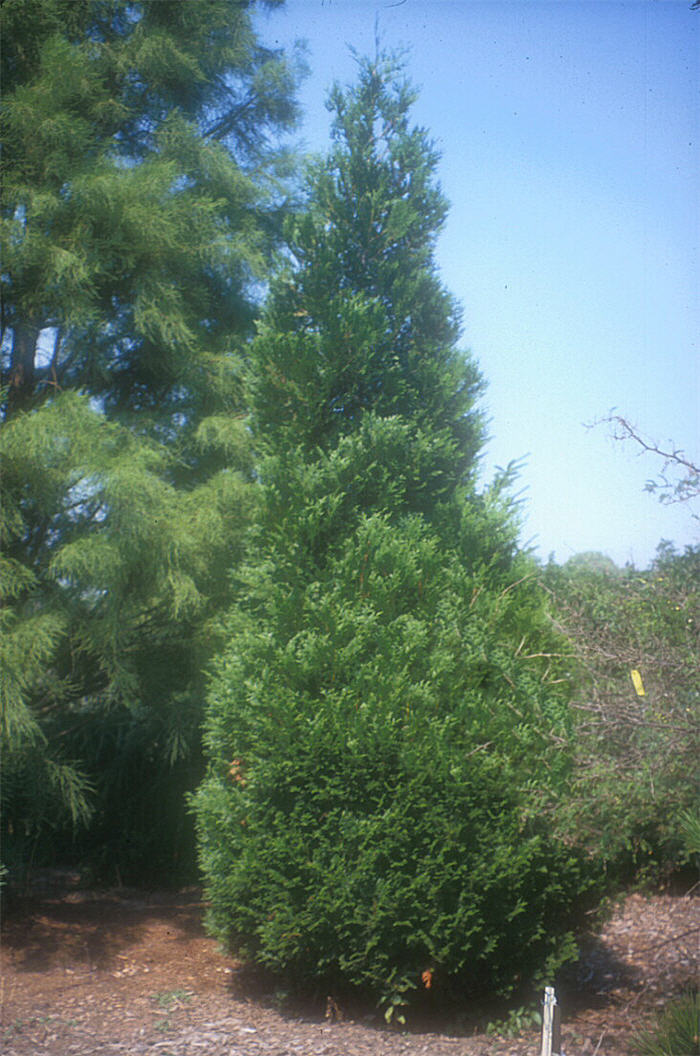| Botanical Name: Thuja 'Green Giant' | |
| Common Name: Green Giant Arborvitae |

-
Anatomy
-
Culture
-
Design
Plant Type
Tree, Conifer
Height Range
25-40', 40-60'
Flower Color
n/a
Flower Season
n/a
Leaf Color
Green, Dark Green
Bark Color
Brown, Red
Fruit Color
Brown
Fruit Season
Fall, Persistent
Sun
Full, Half
Water
Low, Medium, Extra in Summer
Growth Rate
Fast, Moderate
Soil Type
Clay, Loam
Soil Condition
Average, Rich, Well-drained, Moist
Soil pH
Neutral, Basic
Adverse Factors
n/a
Design Styles
English Cottage, Formal, Japanese, Mediterranean, Ranch, Spanish
Accenting Features
Fragrance, Specimen
Seasonal Interest
Winter
Location Uses
Background, Shrub Border, Foundation, Walls / Fences
Special Uses
Hedge, Screen, Mass Planting, Wind Break, Small Spaces
Attracts Wildlife
n/a
Information by: Stephanie Duer
Photographer:
Photographer:
-
Description
-
Notes
‘Green Giant’ is a moderately-fast growing arborvitae hybrid (T. plicata x T. standishii) that is often promoted as a disease-free substitute for Leland cypress. Trees may grow to 40 to 60 feet tall and 12 to 18 feet wide, with a dense, narrow, pyramidal habit, but can be easily kept more compact by pruning for screens or hedges. In the proper environment, trees can grow up to3 to 4 feet per year. Horizontal to slightly upright branching with sprays of aromatic, scale-like, dark green foliage. Foliage does not yellow in winter. Small, upright, light brown seed cones (to 1/2-inch long).
Best grown in fertile, well-drained soils in full sun to part shade in an area that receives regular watering. Tolerates somewhat wide range of soils and some dry conditions once established. Appreciates some light afternoon shade in our hot summer climate. For screens, plant trees 5 to 6 feet apart.